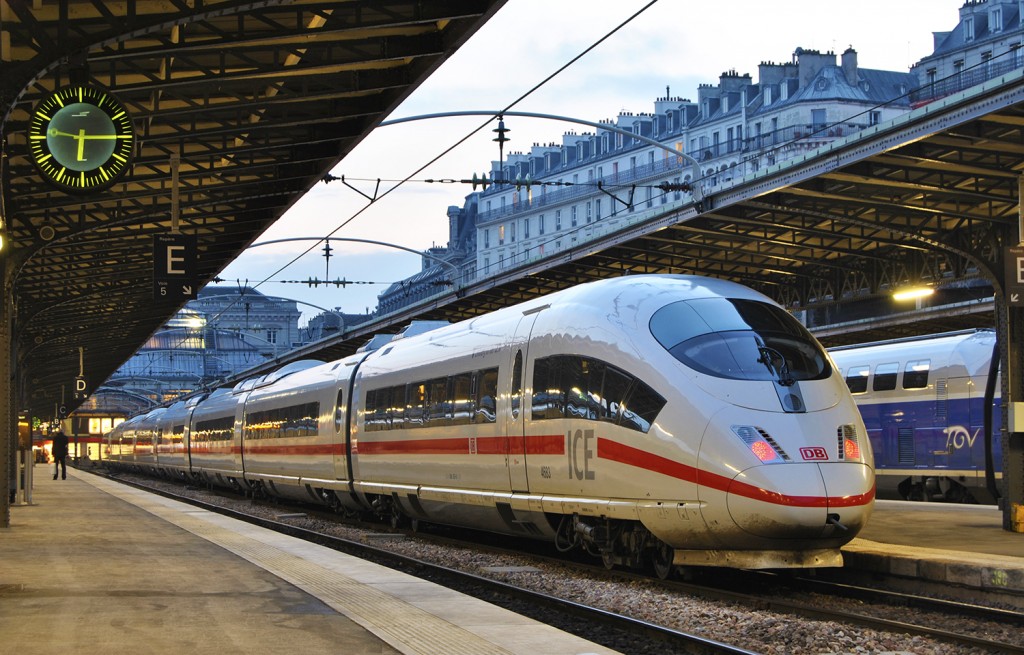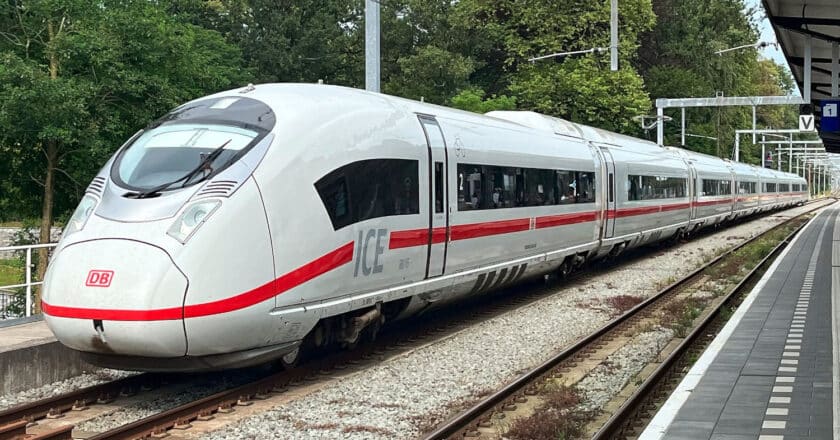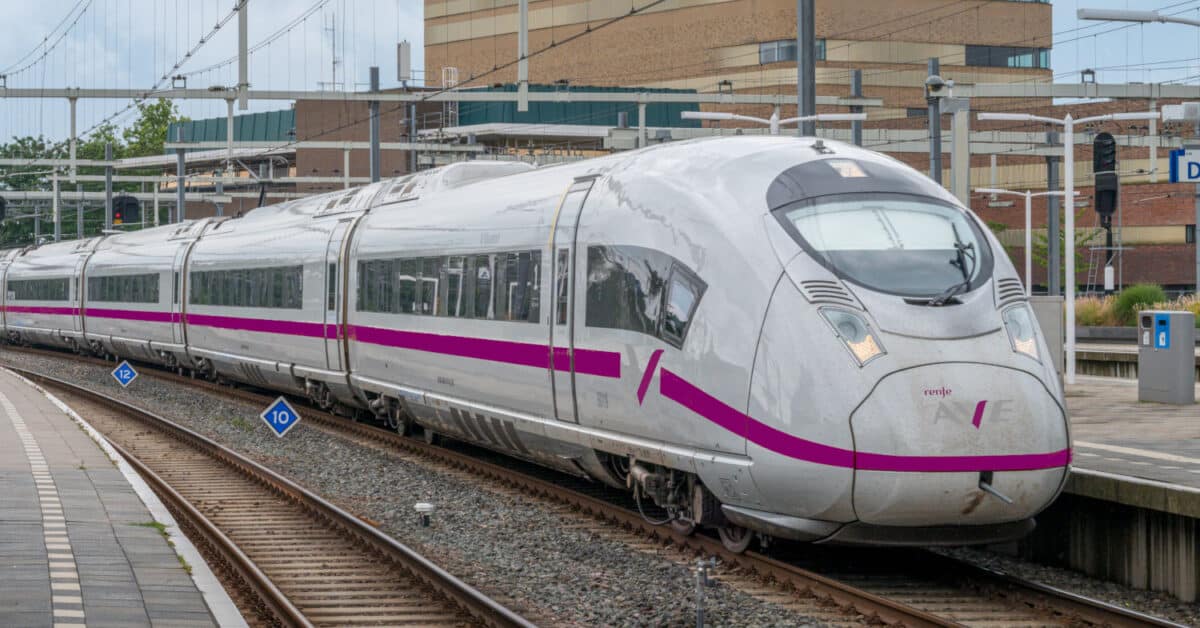The Minister of Transport and Sustainable Mobility, Óscar Puente, has announced that he will travel to Germany next week to visit a Siemens rolling stock factory, following the recent detection of problems in Talgo’s Avril high-speed trains.
This Friday, during a visit to the works at the new Murcia del Carmen station, Puente acknowledged that the current AVE fleet is the same as in 2008, except for the new Avril units, which “have not given the best possible results”.
Puente explained that the trip to Siemens is aimed at accelerating the arrival of new trains to enhance rail service, although the Ministry has not provided further details at this stage.
Which trains can Renfe buy from Siemens?
The question is to speed up the arrival of exactly which new trains.
To date, it has not been reported that Renfe has initiated a new procedure for the purchase of rolling stock.
Given the urgency of acquiring new rolling stock that can also run in France, the operator could be involved in an unpublicised negotiated procedure.
Concerning the possibilities of procuring rolling stock from Siemens, there are three options:
The second-hand ICE 3 M (BR 406) that DB has offered for sale

One of the possibilities is for Renfe to opt for the 406 series trains that the operator Deutsche Bahn has offered for sale. These are Siemens-Bombardier ICE 3M platform units, capable of running at voltages of 15 kV, 16.7 Hz AC, 25 kV 50 Hz AC, 1.5 kV DC and 3 kV DC.
The German company is withdrawing them from service because of reliability problems with the multi-voltage system. But they are less problematic trains if there are no voltage changes.
They have a capacity of 426 seats in two classes, have a bar service and reach 320 km/h.
Advantages:
- Faster delivery. They would only need to be fully refurbished and homologated in Spain, a faster process than design, manufacture, testing, and certification.
- Cheaper price. As second-hand trains, they are cheaper to buy than new trains.
- They are certified in France. Renfe could use them directly on international services, provided that Siemens fixes the reliability issues of the multi-voltage system. If they were left at dual voltage 1.5 kV DC/25 kV 50 Hz AC, this would be sufficient.
- Similarities with the 103 series. They share some elements with Renfe’s 103 series that would facilitate their maintenance. But don’t be fooled by appearances. Despite their similar appearance, they are on different platforms. The BR 406 are Siemens-Bombardier ICE 3 trains, and the 103 are Velaro E, an evolution designed entirely by Siemens.
Disadvantages:
- Reliability. Withdrawal due to low reliability would require an initial investment to improve it and prevent it from causing more problems than the ones to be corrected. This would explain why they are in the Siemens factory.
- Heavily used trains. They show a lot of wear and tear due to intensive use for international services.
- Lower durability. These trains were manufactured between 1997 and 2001, so they are about to reach 30 years of age. Their acquisition would be a quick and cheap solution, but it would still be a patch that would last about… 10 years?
Siemens Velaro Neo

A slower and more expensive solution for the future would be to buy new trains. The fastest and safest option would be to opt for the Siemens Velaro Neo (or Velaro MS), the penultimate version of the German manufacturer’s high-speed train.
Its greatest exponent is Deutsche Bahn’s BR 408 series. In its two-class and cafeteria version, it offers 439 seats, although the Egyptian version increases the capacity to 481 passengers without sacrificing comfort.
They have a top speed of 320 km/h and are also multi-voltage.
Advantages:
- Quality and durability. It is an experienced train, based on a successful platform. The ICE 3 and Velaro trains stand out for their comfort, reliability, and robustness. As a new train, it would be an investment for the short and long term.
- Approved in France. The train is currently approved throughout the European Union, with authorisation to run in Germany, Belgium, and the Netherlands. Recently, DB and Siemens announced their future homologation in France and Poland. Therefore, when delivered to Renfe, they will be able to run in international services.
- Production line in operation. Siemens is manufacturing these trains for Germany and Egypt. The fact that the production line is running means that delivery times can be fast, especially if the Renfe version has few differences.
Disadvantages:
- Price. Compared to the purchase of second-hand trains, acquiring new Velaro Neo trains would be pricier and could generate more controversy, as we are talking about a negotiated contract without advertising. Each unit is estimated to cost 34.9 million euros.
- Slower delivery. Compared to the 406, the delivery of these trains would be slower. Still, there would not be too long to wait. Deutsche Bahn placed the order in June 2020, extended it in 2022, and the first trains entered service in December 2022. This included the design phase, so Renfe’s hypothetical Velaro Neo could be running by mid-2027.
- Accessibility. The floor height of these trains is 1,280 mm above the rail head, compared to the 760 mm of the platforms. Unlike Talgo trains, which are at platform height, Siemens trains require a special ramp that slows down the entrance and exit for wheelchairs.
Siemens Velaro Novo

The least likely option, but not out of the question, is for Siemens to try to sell Renfe the latest generation of its high-speed train, the Velaro Novo.
It is a train that includes improvements in energy efficiency, soundproofing and more interior space. It would be a commitment to cutting-edge technology and would allow Siemens to bring this version to the European market and homologate it.
However, although it was already in the manufacturer’s catalogue when DB bought the 408s in 2020, the German operator preferred to be cautious and purchase an evolution of the Velaro D (BR 407) rather than such an innovative train. The reason? Not to suffer the delays in the production and homologation of the 407 again.
The Velaro Neo incorporated some innovations of the Novo, such as energy efficiency, accessibility, interior modernisation and windows that do not limit mobile network coverage inside the train.
The move worked out well for them. While they are not getting state-of-the-art trains, they have had it in service in just 36 months.
So far, the Velaro Neo has only been sold in the United States, as American Pioneer 200, for Brightline.
Advantages:
- Cutting-edge technology. Renfe would have the train with the most cutting-edge technology in Europe, which would extend its obsolescence.
- More customised design. Since it would be the first order and would not be subject to an already active production line, Renfe could better customise the train.
- Comfort at the level of a premium brand. If the Velaro platform and its ICE 3 predecessor have always excelled in comfort, the latest version should offer an unbeatable level of comfort.
Disadvantages:
- Pricier. A train with so many innovations would be more expensive than the Velaro Neo. Difficult to justify the urgency of the negotiated procedure without advertising.
- Very slow delivery. There is no active production line and no design to build on. Therefore, this train would have to go through a design phase virtually from scratch. And manufacturing could be delayed.
- A train without certification. When Renfe received the hypothetical Velaro Neo, they would be certified throughout the EU and authorised to run in 5 countries. It would only have to homologate the differences and carry out the specific tests for Spain and each line. However, the Velaro Novo would require almost complete homologation. The advances adopted by the 408 series and the homologation being done by the test car(which reached 405 km/h in July) would reduce the process. But it would take much longer.
Conclusions
It is too early to be sure that Renfe will buy high-speed trains from Siemens as a matter of urgency to solve its material shortage problems.
However, the minister’s words suggest that there is a process underway that he seeks to expedite with his visit to a factory of the manufacturer.
Of the three options, the best would be to buy new trains of the Velaro Neo type (also called Velaro MS). However, if Renfe wants a quick solution, especially to unblock its problems in France, it could opt to buy the trains second-hand.
Opting for the Velaro Novo is not out of the question, but it would be shooting oneself in the foot. It would mean repeating some mistakes of choosing the Talgo Avril over more proven trains such as the Avelia Euroduplex or the ETR 1000 that Alstom and Hitachi presented them to the 2016 train purchase process, respectively.
